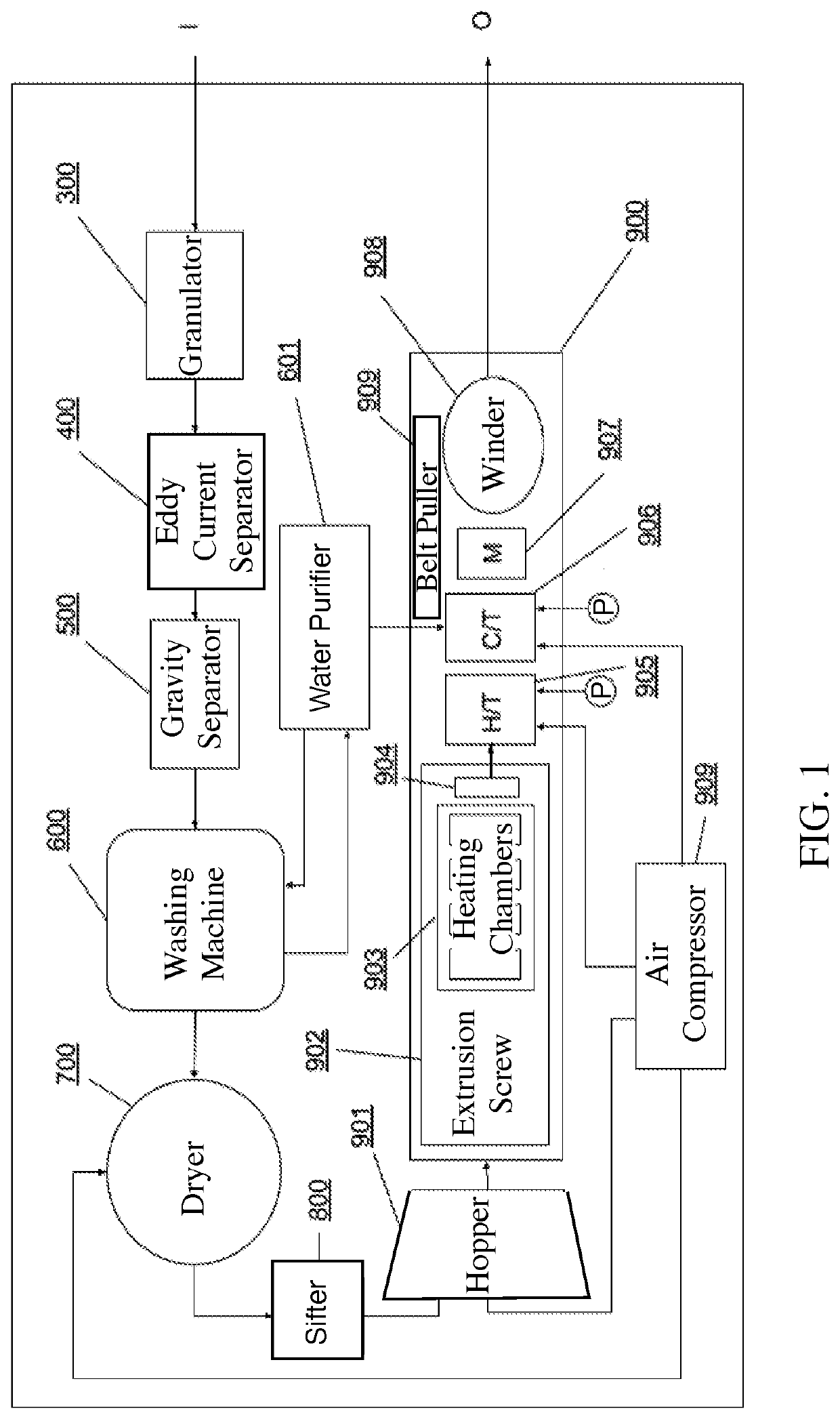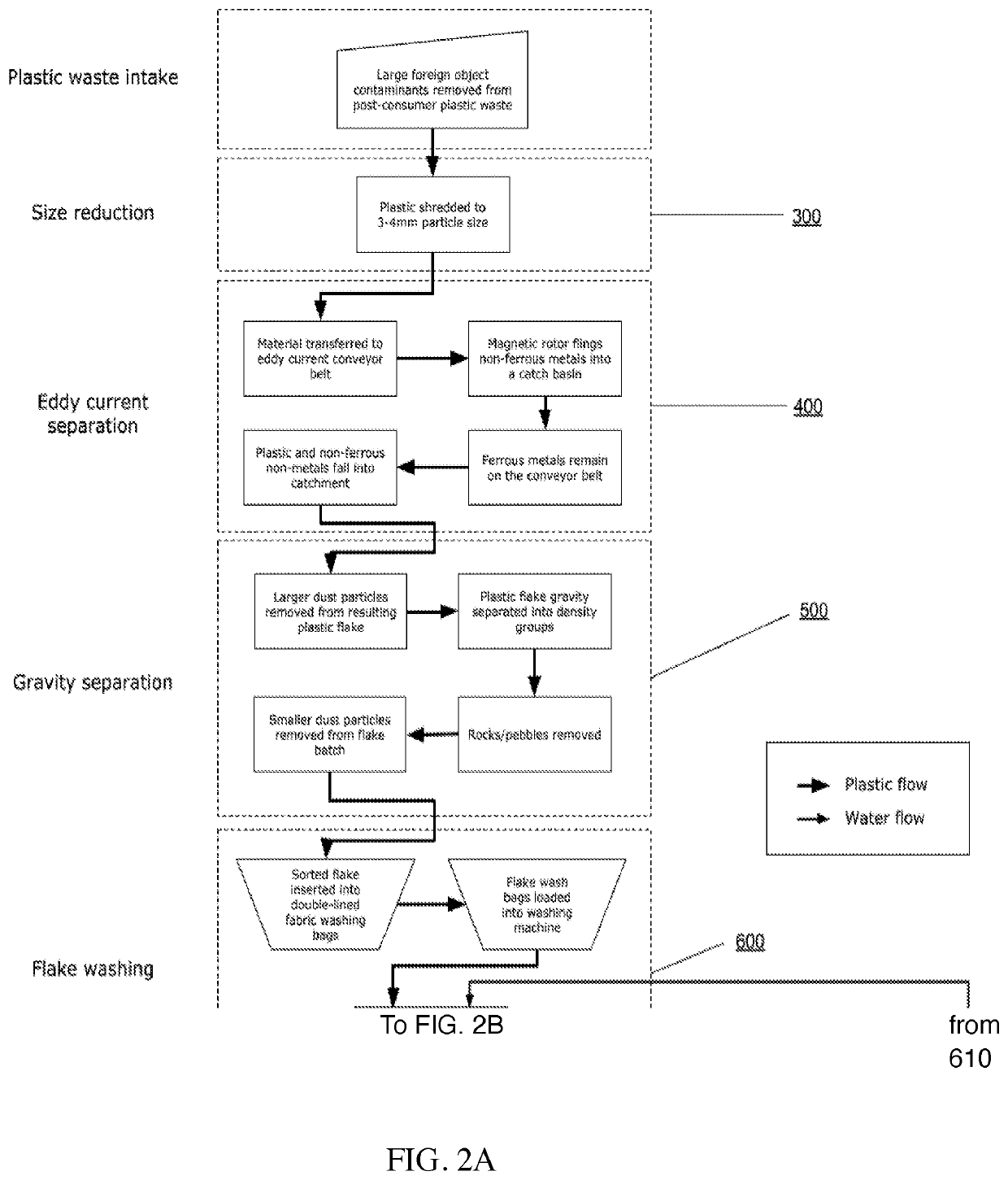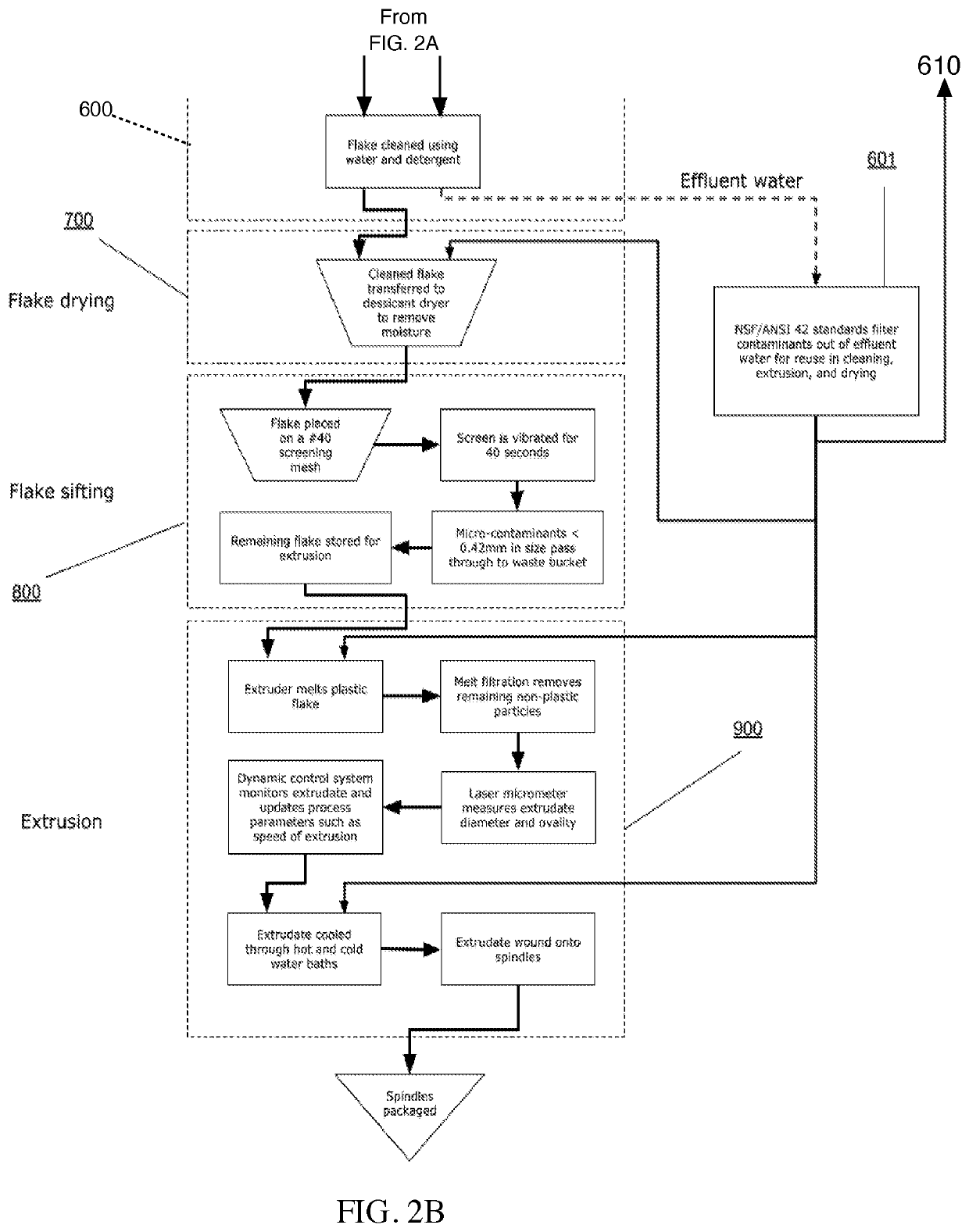Method and Apparatus for Recycling Post-Consumer Plastic Waste
a post-consumer and plastic waste technology, applied in the field of plastic recycling and plastic manufacturing processes, can solve the problems of low-quality mono filaments with a high variance in diameter, inability of conventional extrusion systems to process post-consumer and contaminated plastic waste, and inherently non-uniform feedstocks for post-consumer plastic waste as feedstocks, so as to reduce the water consumption of recycling and extrusion processes and eliminate industrial waste water
- Summary
- Abstract
- Description
- Claims
- Application Information
AI Technical Summary
Benefits of technology
Problems solved by technology
Method used
Image
Examples
Embodiment Construction
Overview
[0027]The following detailed description of the invention details with accompanying drawings are not intended to limit the scope of the invention, but rather illustrate the preferred embodiment of the invention. FIGS. 1-2A and 2B illustrate the recycling and extrusion system which comprises the granulation step; FIG. 3 that initiates the recycling process, eddy current separation FIG. 4A-4B and gravity separation FIG. 5A-5B for filtering, the washing mechanism FIG. 6 that cleans the material and repurposes the effluent water, the drying phase FIG. 7 that removes all excess moisture from the material, the sifting phase FIG. 8 that further decontaminates and homogenizes the material, and the final extrusion step FIG. 9 that melts the material into its final form factor as mono filament in accordance to the programmable logic control process. FIGS. 10A and 10B depict the system for controlling the diameter of the extrudate to produce consistent and uniform material.
[...
PUM
| Property | Measurement | Unit |
|---|---|---|
| Temperature | aaaaa | aaaaa |
| Fraction | aaaaa | aaaaa |
| Diameter | aaaaa | aaaaa |
Abstract
Description
Claims
Application Information
 Login to View More
Login to View More - R&D
- Intellectual Property
- Life Sciences
- Materials
- Tech Scout
- Unparalleled Data Quality
- Higher Quality Content
- 60% Fewer Hallucinations
Browse by: Latest US Patents, China's latest patents, Technical Efficacy Thesaurus, Application Domain, Technology Topic, Popular Technical Reports.
© 2025 PatSnap. All rights reserved.Legal|Privacy policy|Modern Slavery Act Transparency Statement|Sitemap|About US| Contact US: help@patsnap.com



